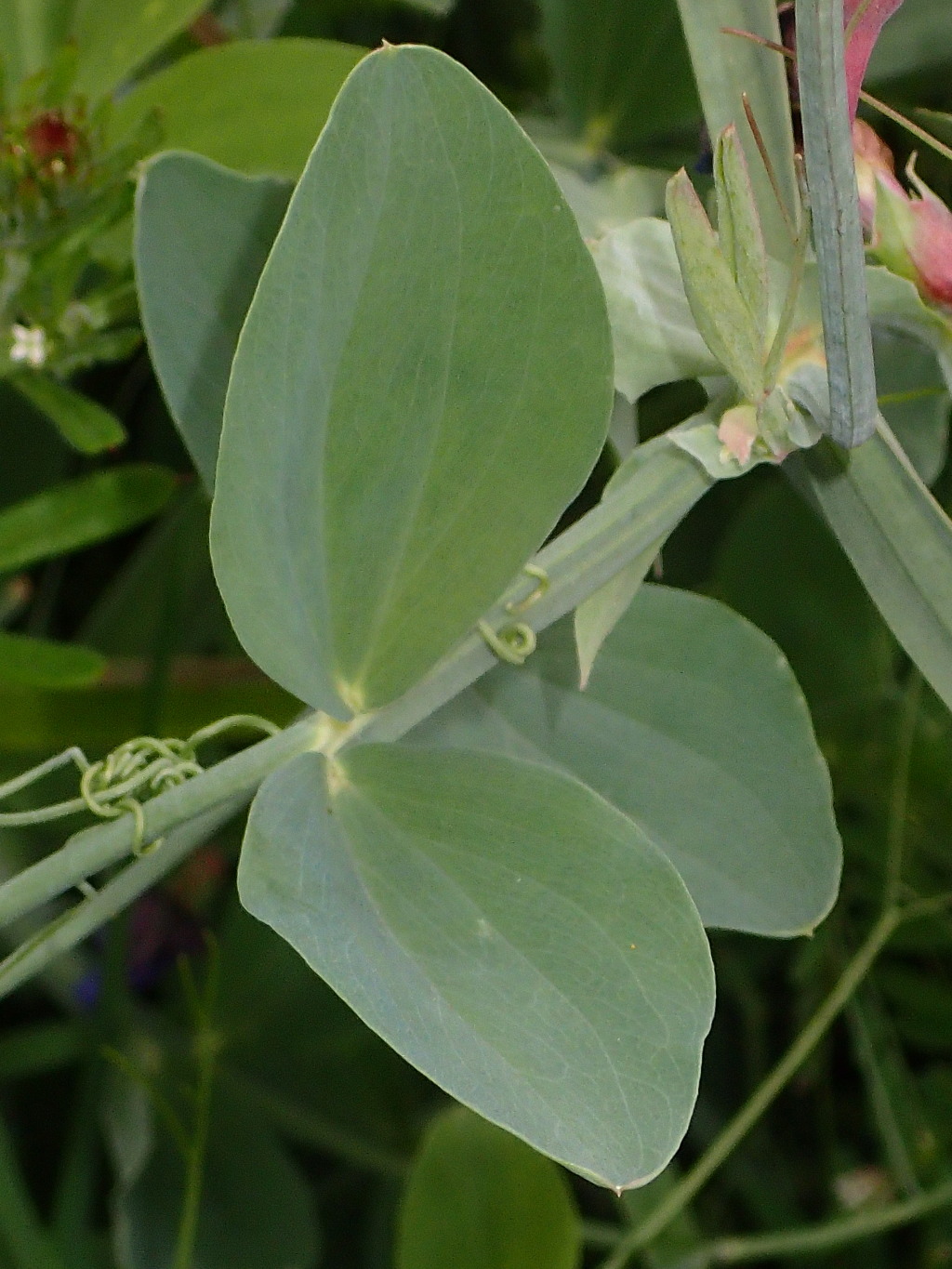Lathyrus tingitanus
L. Tangier PeaClimbing annual herb; stems to c. 3 m long, glabrous, angular, winged. Leaves 2-foliolate; leaflets lanceolate or ovate, 2–8 cm long, 3–20 mm wide, glabrous, apices acute or obtuse, sometimes mucronate; tendrils usually 3 or more; petiole 1.5–3 cm long, winged; stipules lanceolate, semi-sagittate, 12–25 mm long. Flowers usually 1–3 in racemes 5–10 cm long; pedicel to 10 mm long; peduncle 2–8 cm long; bract narrow-triangular, c. 1 mm long; calyx 8–12 mm long, 5-veined, glabrous, teeth more or less equal, shorter than tube; corolla 2–3 cm long, pale pink to purple; standard broad-ovate; wings shorter; keel obtuse; style twisted, not winged. Pod oblong, 6–10 cm long, 8–10 mm wide, compressed, glabrous, reticulate-veined; seeds 6–10, ovoid, c. 7 mm long, smooth, black. Flowers Nov.–Jan.
VVP, GipP, Gold, CVU, NIS, HSF, Strz. Also naturalised WA, SA, Qld, Tas. Native to the Mediterranean region. Known from scattered records throughout southern Victoria.
Jeanes, J.A. (1996). Fabaceae. In: Walsh, N.G.; Entwisle, T.J., Flora of Victoria Vol. 3, Dicotyledons Winteraceae to Myrtaceae, pp. 663–829. Inkata Press, Melbourne.
 Spinning
Spinning



